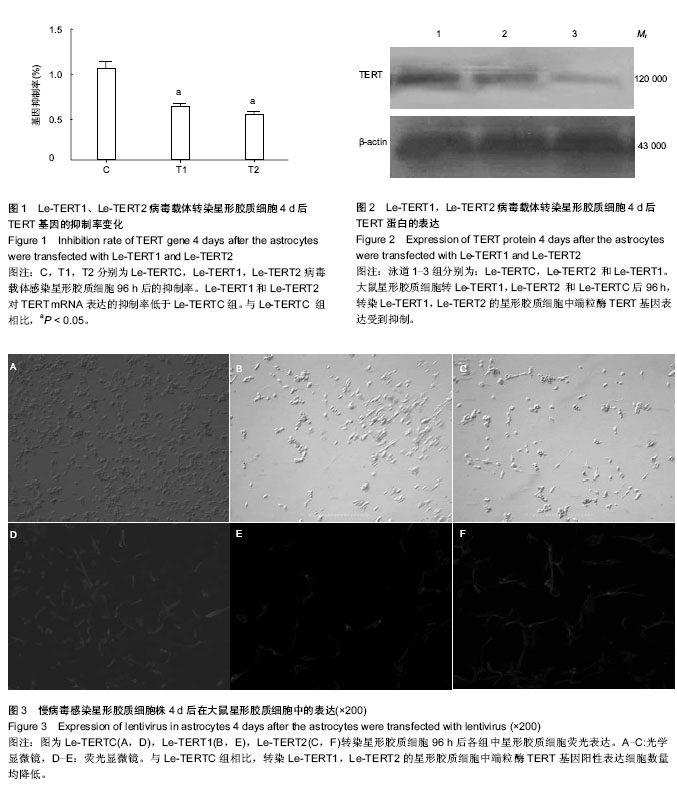| [1] Elbashir SM, Harborth J, Lendeckel W, et al. Duplexes of 21-nucleotide RNAs mediate RNA interference in cultured mammalian cells. Nature. 2001;411(6836):494-498.[2] The Ministry of Science and Technology of the People’s Republic of China. Guidance Suggestions for the Care and Use of Laboratory Animals. 2006-09-30.[3] Hwang IK, Choi JH, Li H, et al. Changes in glial fibrillary acidic protein immunoreactivity in the dentate gyrus and hippocampus proper of adult and aged dogs. J VetMed Sci. 2008;70(9):965-969.[4] Vos PE, van Gils M, Beems T, et al. Increased GFAP and S100beta but not NSE serum levels after subarachnoid haemorrhage are associated with clinical severity. Eur J Neurol. 2006;13(6):632-638.[5] 周建军,吴国材,胡荣,等.大鼠实验性脊髓损伤后胶质瘢痕分布规律研究[J].中华神经外科杂志,2007,23(5):347-350.[6] Hobohm C, Gunther A, Grosche J, et al. Decomposition and long-lasting downregulation of extracellular matrix in perineuronal nets induced by focal cerebral ischemia in rats. J Neurosci Res. 2005;80(4):539-548. [7] Alonso G. NG2 proteoglycan-expressing cells of the adult rat brain: possible involvement in the formation of glial scar astrocytes following stab wound. Glia. 2005;49(3):318-338. [8] Kozuka N, Itofusa R, Kudo Y, et al. Lipopolysaccharide and proinflammatory cytokines require different astrocyte states to induce nitric oxide production. J Neurosci Res. 2005;82(5): 717-728.[9] Tao X, Ming-kun Y, Wei-bin S, et al. Role of telomerase reverse transcriptase in glial scar formation after spinal cord injury in rats. Neurochem Res. 2013;38(9):1914-1920.[10] Kirkpatrick KL, Mokbel K. The significance of human telomerase reverse transcriptase (hTERT) in cancer. Eur J Surg Oncol. 2001;27(8):754-760.[11] Greider CW, Blackburn EH. Identification of a specific telomere terminal transferase activity in tetrahymena extracts. Cell. 1985;43:405-413.[12] Yu JY, DeRuiter SL, Turner DL. RNA interference by expression of short-interfering RNAs and hairpin RNAs in mammalian cells. Proc Natl Acad Sci U S A. 2002;99(9): 6047-6052.[13] Elbashir SM, Martinez J, Patkaniowska A, et al. Functional anatomy of siRNAs for mediating efficient RNAi in Drosophila melanogaster embryo lysate. EMBO J. 2001;20(23): 6877- 6888.[14] Dorsett Y, Tuschl T. siRNAs: applications in functional genomics and potential as therapeutics. Nat Rev Drug Discov. 2004;3(4):318-329.[15] Bernstein E, Caudy AA, Hammond SM, et al. Role for a bidentate ribonuclease in the initiation step of RNA interference. Nature. 2001;409(6818):363-366.[16] Zamore PD. Ancient pathways programmed by small RNAs. Science. 2002;296(5571):1265-1269.[17] Dillin A. The specifics of small interfering RNA specificity. Proc Natl Acad Sci U S A. 2003;100(11):6289-6291.[18] Brummelkamp TR, Bernards R, Agami R. Stable suppression of tumorigenicity by virus-mediated RNA interference. Cancer cell. 2002;2(3):243-247.[19] 李振宇,徐开林.慢病毒载体构建及结构优化[J].国外医学:分子生物学分册,2002,24(5):310-313.[20] Frankel AD, Young JAT. HIV-1: fifteen proteins and an RNA. Annu Rev Biochem. 1998;67(1):1-25.[21] Rubinson DA, Dillon CP, Kwiatkowski AV, et al. A lentivirus-based system to functionally silence genes in primary mammalian cells, stem cells and transgenic mice by RNA interference. Nat Genet. 2003;33(3):401-406.[22] Naldini L, Bl?mer U, Gallay P, et al. In vivo gene delivery and stable transduction of nondividing cells by a lentiviral vector. Science. 1996;272(5259):263-267. |

.jpg)
.jpg)
.jpg)